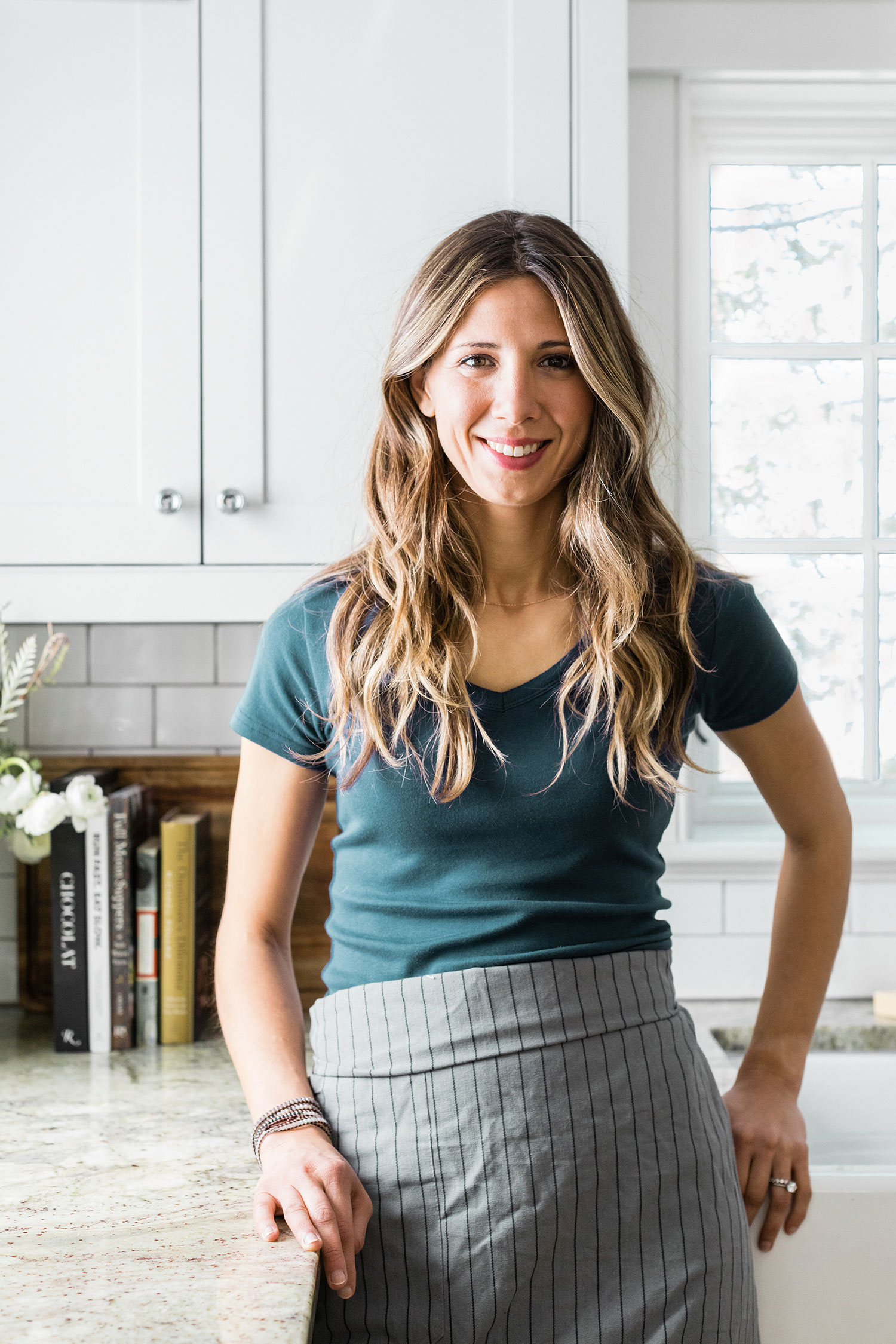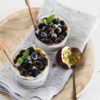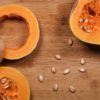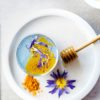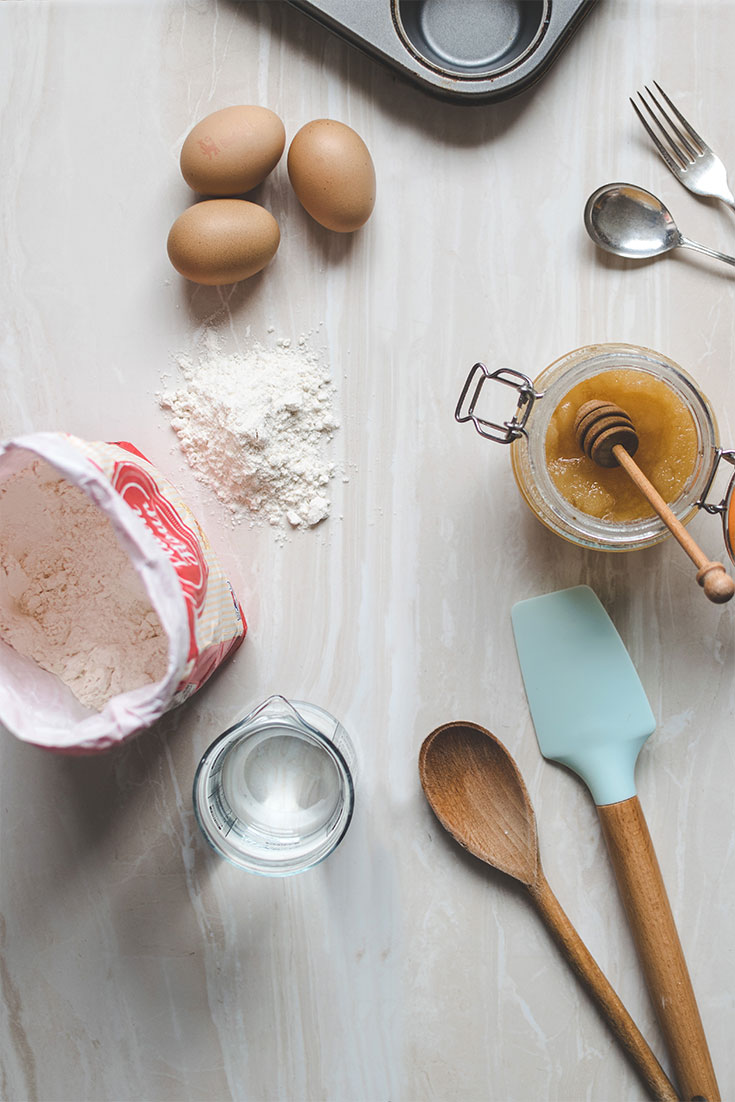
Hi friends! It’s time to talk honey. And anyone who knows me knows that I’m a bit of a honey-pusher. Got a cough? Here’s some honey. You cut yourself? Let’s put some honey on it and cover it with a Band-Aid? You’re tired? Have some bee pollen mixed with honey. My kids are convinced that if they have a cold, the only way they can fall asleep at night is if I give them a spoonful of honey before bed. Honey is definitely one of those foods that if you buy the right kind, then you are going to be consuming a real nutritional powerhouse. Unfortunately, a lot of the conventional honey out there really is no good. You may have heard of honey being great for allergies and sore throats and even wounds, but the type of honey that touts these health benefits is raw honey. Don’t worry, I promise, it’s not like my black-market raw milk—you can find this stuff anywhere and it’s not illegal.
There are definitely a lot of different types of honey out there (over 300!) like orange blossom, clover, tupelo, manuka, etc. but they are going to fall under the umbrellas of either “raw” or not raw, which in this case is conventional. Here’s the difference:
- Raw honey is pure, unfiltered, unpasteurized and not heated above 95° and contains bee pollen. Because of this, the honey is not robbed of it’s nutrients.
VS.
- Conventional honey is heated, filtered and the bees from the hive may have been treated with antibiotics (not even your honey is safe from this problem!) Conventional honey often times contains additives like high fructose corn syrup and contains little to no pollen.
Aside from the nutritional punch that comes with bee pollen, consuming a honey with no pollen is bad for another reason as well—without pollen, there is no way of knowing where the honey is coming from because there is no way of being able to identify the pollen of flowers (and therefore the origin) that were collected by the bees. This means that the majority of conventional honey on shelves today can come from places like China, which is bad, because honey from China has been found to contain things like lead and illegal antibiotics—gross. The other problem with honey coming from places like China is that it is undercutting the American beekeepers because it’s selling honey to the US at a much cheaper price. In 2001, the US actually decided to do something about this and banned imported honey from China, but this problem hasn’t gone away because China is still really good at smuggling honey into the States http://abc7chicago.com/food/-60-tons-of-honey-illegally-imported-from-china-seized-by-federal-authorities-in-chicago/1325478/). The worst part about this is that you, as a consumer has no way of knowing where your honey is coming from because it’s not required to be labeled. I’ve attached a graphic that shows the names of some of the honey tested and found to have no pollen. If your honey is on this list, there’s a good chance it’s not coming from the US.
OK, enough about the history of honey, let’s talk nutrition! Raw honey is comprised of 80% natural sugar, 18% water, 2% protein and lots of vitamins and minerals such as the B vitamins, iron, zinc, selenium, magnesium, calcium, potassium and phosphorus. One tablespoon of honey has 64 calories but a relatively low glycemic load (lower than a banana) so it doesn’t cause a crazy blood sugar spike like table sugar. Additionally, raw honey is a great source of both pre and probiotics (the food that feeds the good bacteria and the good bacteria themselves). And if you are someone who suffers from seasonal allergies, then you want to look for a “local” raw honey. And local doesn’t have to mean the same town, it can be in the same region, so here in Massachusetts, a Vermont-made honey is still considered “local”. How does it help with allergies? Because bees go from flower to flower collecting pollen (i.e. the same thing responsible for your awful allergy symptoms) but when you eat local raw honey, you are also ingesting some of that pollen and over time you get desensitized to what’s causing your allergic reaction.
Honey really is a great example of why all sugars aren’t the same. Some foods contain natural sugars that come with a slew of amazing health benefits that should be enjoyed! As in most cases with food, if the honey you are buying is really cheap, then it’s probably really cheap. Either buy the real stuff (expect to spend about $7-10) or I wouldn’t eat it at all. But that would be a shame, especially for a honey-pusher like me.


